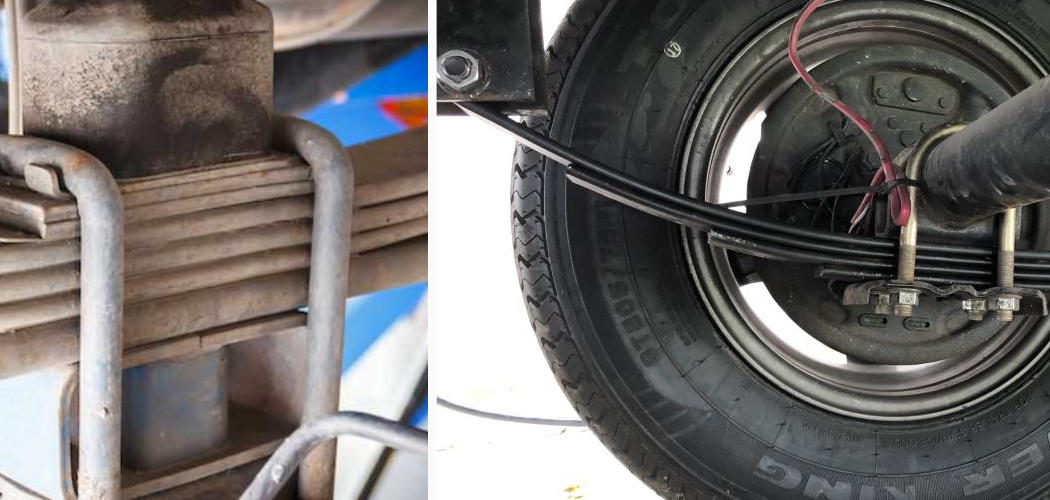Have you noticed some unusual changes in your ride lately? Are you experiencing a bumpy and uncomfortable drive? It’s possible that your leaf springs could be to blame. Leaf springs are an essential component of the suspension system in most vehicles, providing stability and support for smooth driving. However, just like any other part of a car, leaf springs can wear out over time or become damaged by various factors such as heavy loads or rough road conditions.
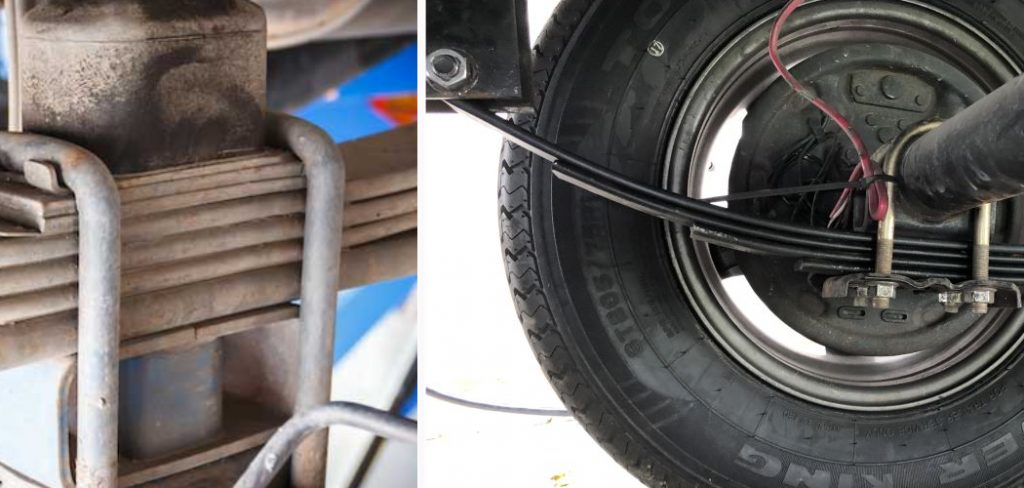
In this blog post titled “How to Tell if Leaf Springs are Bad,” we will discuss everything you need to know about leaf springs – their function, common signs of wear and tear, and how to diagnose and fix potential issues. So get ready to rev up your knowledge on leaf spring maintenance with our informative guide!
Why is It Important to Tell if Leaf Springs Are Bad?
1 . To Ensure Safe Driving
The primary reason for knowing how to tell if leaf springs are bad is to guarantee safe driving. Leaf springs play a significant role in supporting the weight of your vehicle and providing stability while on the road. If they are damaged or worn out, it can affect your car’s handling, making it difficult to control and potentially causing accidents.
2 . To Avoid Costly Repairs
Identifying and addressing issues with leaf springs early on can save you from expensive repairs in the future. If left unchecked, damaged leaf springs can lead to further damage to other parts of your car’s suspension system, resulting in a more complex and costly repair job.
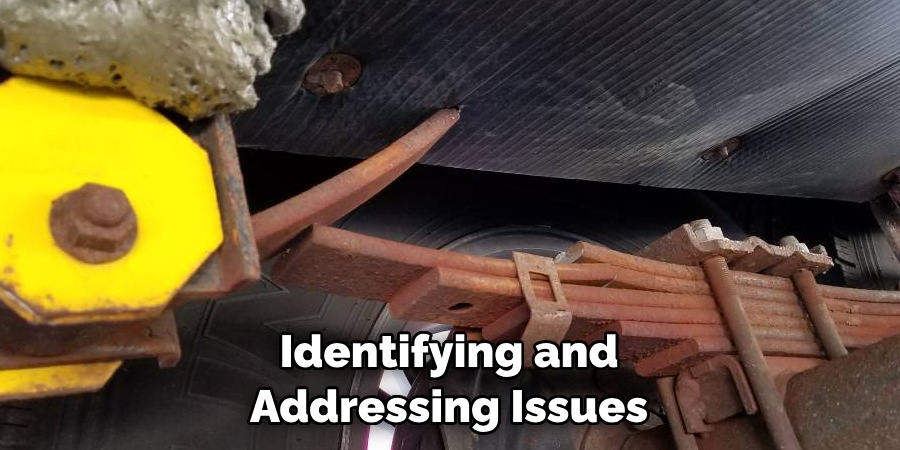
3 . To Maintain Comfortable Ride Quality
Leaf springs also contribute to the smoothness of your ride by absorbing shock and vibrations from the road. When they are in good condition, you can enjoy a comfortable drive without feeling every bump and dip on the road. But if they are bad, your vehicle’s ride quality will be compromised, leading to an uncomfortable driving experience.
13 Tips on How to Tell if Leaf Springs Are Bad
1 . Visual Inspection
The first and easiest way to tell if your leaf springs are bad is by visually inspecting them. Look for any signs of visible damage, such as cracks, breaks, or rust on the springs and their components. Also, check for any sagging or misaligned springs.
2 . Unusual Noises
If you hear unusual noises such as clunking, creaking, or squeaking sounds coming from your vehicle’s suspension, it could be a sign of damaged leaf springs. These noises usually occur when the springs are worn out and can no longer support the weight of the car effectively.
3 . Bouncing or Sagging
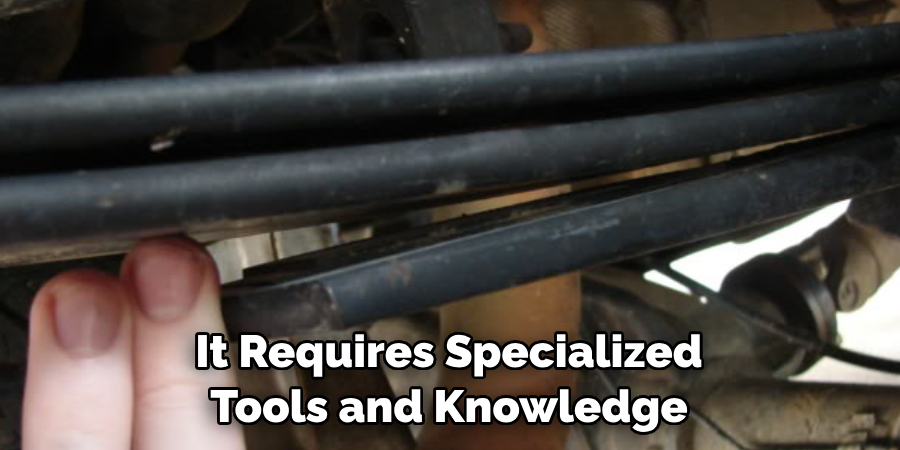
If your vehicle is bouncing excessively, especially when going over bumps, it could be a sign that the leaf springs are bad. On the other hand, if your car sags on one side or has a noticeably uneven ride height, it may indicate a damaged or worn-out spring on that particular side.
4 . Uneven Tire Wear
Worn-out leaf springs can also cause uneven tire wear. If you notice your tires are wearing more on one side than the other, it could be due to an issue with the leaf spring on that side.
5 . Vehicle Pulls to One Side
If your car pulls to one side while driving, it could be a sign of a damaged leaf spring on that side. This issue can severely affect your vehicle’s steering and handling, making it difficult to keep the car straight.
6 . Hard Steering
If you find it harder to turn the steering wheel than usual, or if your steering feels stiff, it could be due to bad leaf springs. Damaged leaf springs can cause a misalignment in the steering system, making it harder to turn.
7 . Difficulty Carrying Heavy Loads
One of the primary functions of leaf springs is to support the weight of your vehicle and any additional loads. If you notice that your car has difficulty carrying heavy loads, it could be due to worn-out or damaged leaf springs.
8 . Vibrations While Driving
If you feel excessive vibrations while driving, especially when going over bumps or uneven roads, it could be a sign of bad leaf springs. Damaged leaf springs cannot effectively absorb shock and vibrations from the road, leading to a rough and uncomfortable ride.

9 . Leaking Shock Absorbers
Shock absorbers work together with leaf springs to provide a smooth ride. If you notice any signs of leaking or damaged shock absorbers, it could indicate that your leaf springs are not functioning correctly.
10 . Steering Wheel Not Centered
A misaligned steering wheel can also be a sign of bad leaf springs. If your car has been recently aligned, and the steering wheel is still off-center, it could mean that one side’s leaf spring is damaged, causing an imbalance.
11 . Difficulty Controlling the Vehicle
As mentioned earlier, bad leaf springs can affect your car’s handling and steering. If you notice that your vehicle is more challenging to control than usual, particularly when turning or braking, it could be due to damaged leaf springs.
12 . Change in Ride Quality
If you notice a significant change in your car’s ride quality, such as increased bouncing or a rougher ride, it could be due to bad leaf springs. These issues can significantly affect your driving experience and should not be ignored.
13 . Regular Inspection
The best way to tell if your leaf springs are bad is by regularly inspecting them for any signs of wear and tear. Regular maintenance and inspections can help identify issues early on, allowing you to address them before they cause significant damage or accidents.
Frequently Asked Questions
What Precautions Should I Take to Avoid Bad Leaf Springs?
Proper maintenance is key to preventing bad leaf springs. Make sure to regularly inspect your vehicle’s suspension system, including the leaf springs, for any signs of damage and address them promptly.
How Long Do Leaf Springs Typically Last?
The lifespan of leaf springs can vary depending on factors such as driving habits, road conditions, and weather. However, on average, leaf springs can last anywhere from 50,000 to 100,000 miles.
Can I Drive with Bad Leaf Springs?
It is not recommended to drive with bad leaf springs as it can affect your vehicle’s handling and potentially cause accidents. It is best to address any issues with the leaf springs promptly for safe driving. Also, driving with bad leaf springs can lead to further damage to other parts of your car’s suspension system, resulting in more expensive repairs in the future.
Can I Replace Just One Leaf Spring?
It is generally recommended to replace leaf springs in pairs to ensure balanced suspension and avoid future issues. However, if only one spring is damaged, it is possible to replace just that particular spring. It is always best to consult a professional for advice on the best course of action for your specific vehicle.
How Much Does it Cost to Replace Leaf Springs?
The cost of replacing leaf springs can vary depending on the make and model of your vehicle, as well as the severity of the damage. On average, a replacement can range from $200 to $800 per spring. However, if other components such as shock absorbers or U-bolts also need to be replaced, the cost can increase. It is best to consult a mechanic for an accurate estimate.
Can I Replace Leaf Springs Myself?
While it is possible to replace leaf springs yourself, it is a complicated and potentially dangerous task. It requires specialized tools and knowledge of suspension systems. It is always best to leave this job to a professional mechanic for safe and accurate installation.
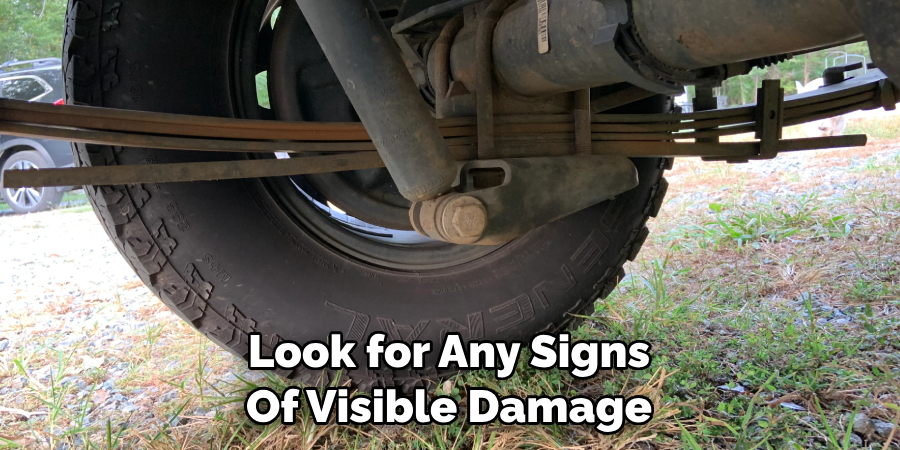
Overall, knowing how to tell if your leaf springs are bad can save you time, and money, and ensure safe driving. Regular maintenance and inspections are crucial for identifying any issues with your leaf springs early on and addressing them promptly. If you notice any of the signs mentioned in this guide, it is best to consult a professional mechanic for proper diagnosis and repairs.
Overall, maintaining your leaf springs in good condition is crucial for a safe and comfortable driving experience. Be sure to address any issues promptly and have regular inspections to catch any potential problems early on. Drive safe!
Conclusion
Leaf springs play an essential role in your vehicle’s suspension system and overall driving experience. Knowing how to tell if leaf springs are bad is crucial for ensuring safe, comfortable, and cost-effective driving. By following these tips and regularly inspecting your leaf springs, you can prevent potential accidents and costly repairs. So, make sure to keep them in good condition for a smoother and safer ride. Happy driving!

